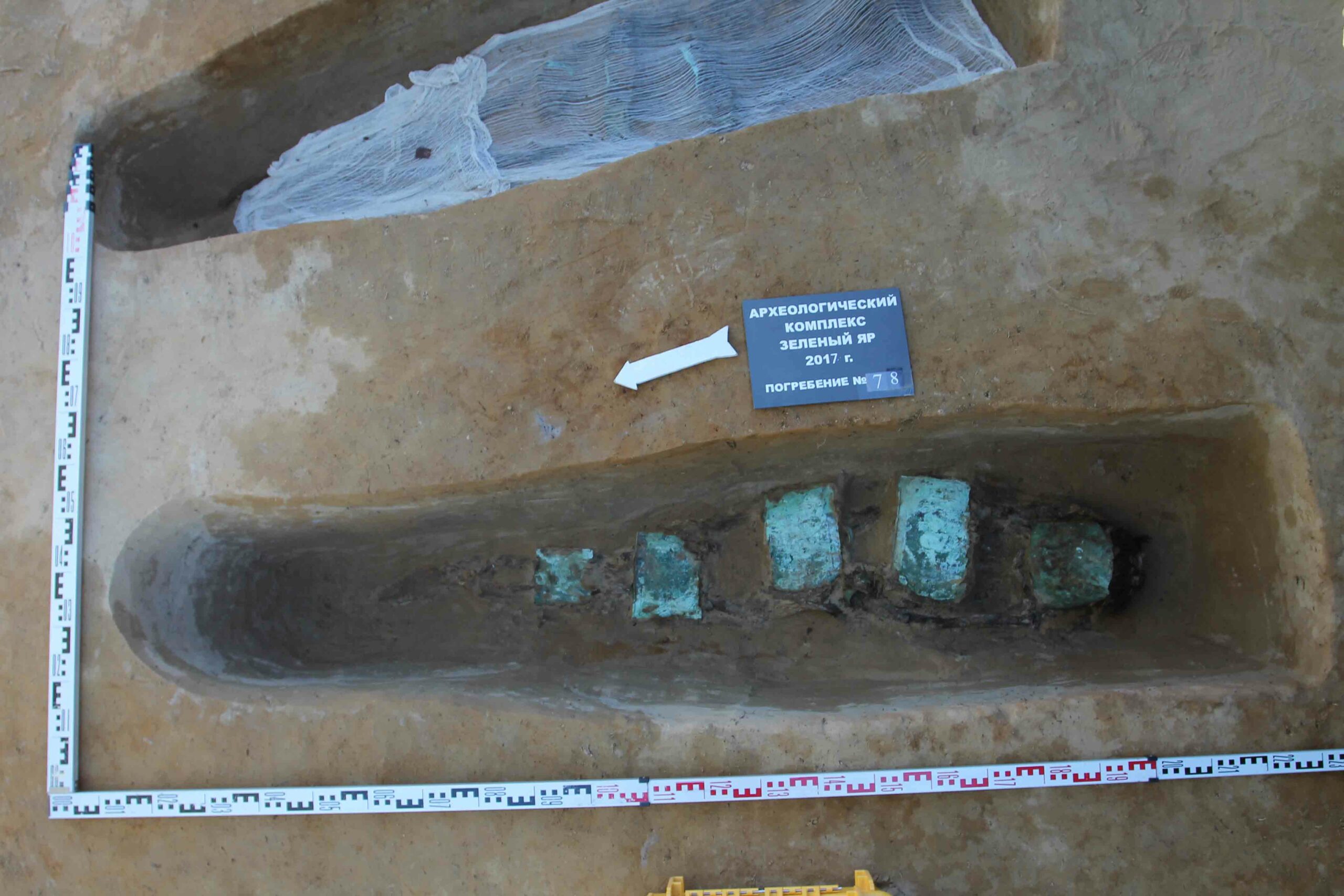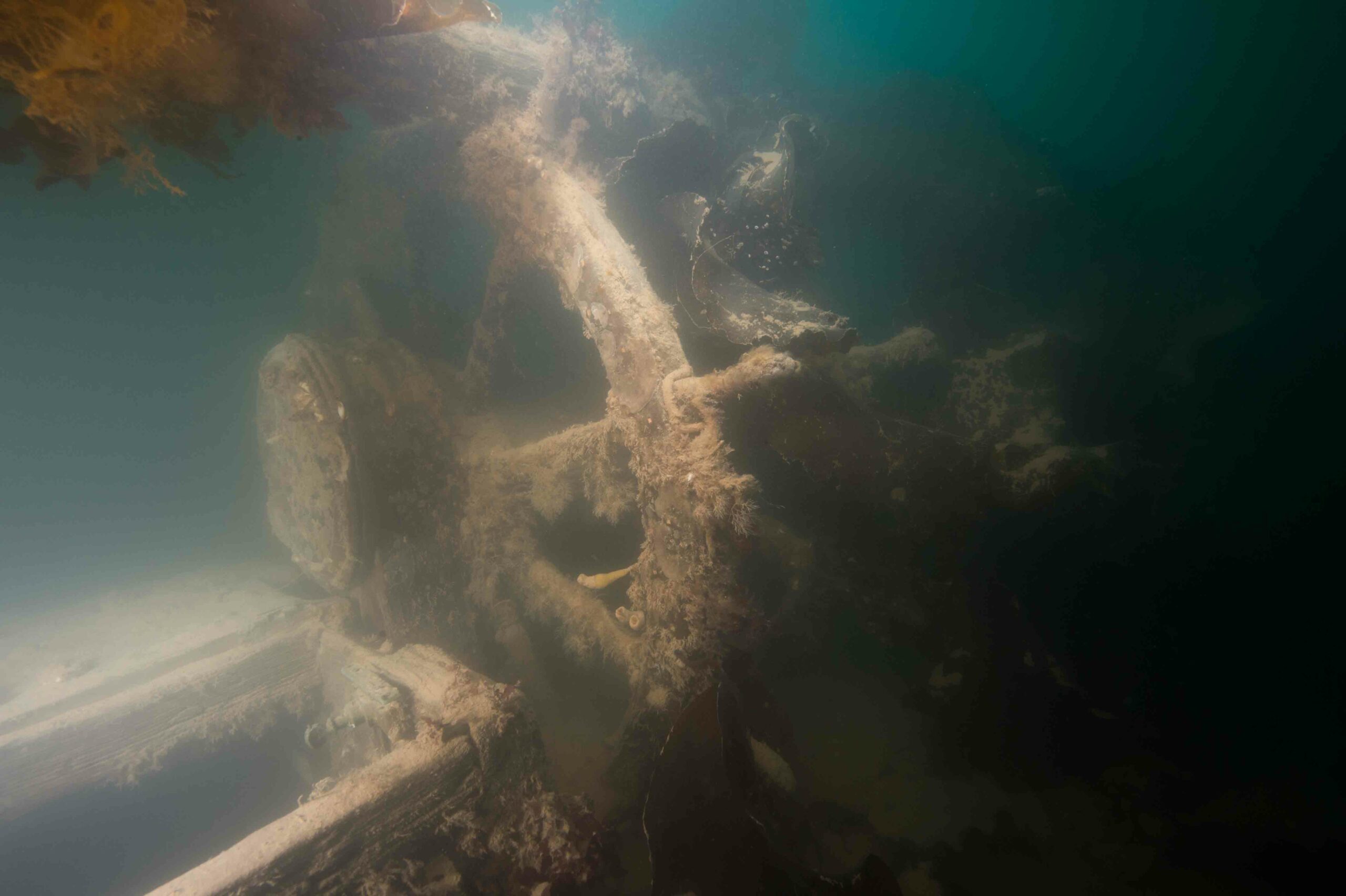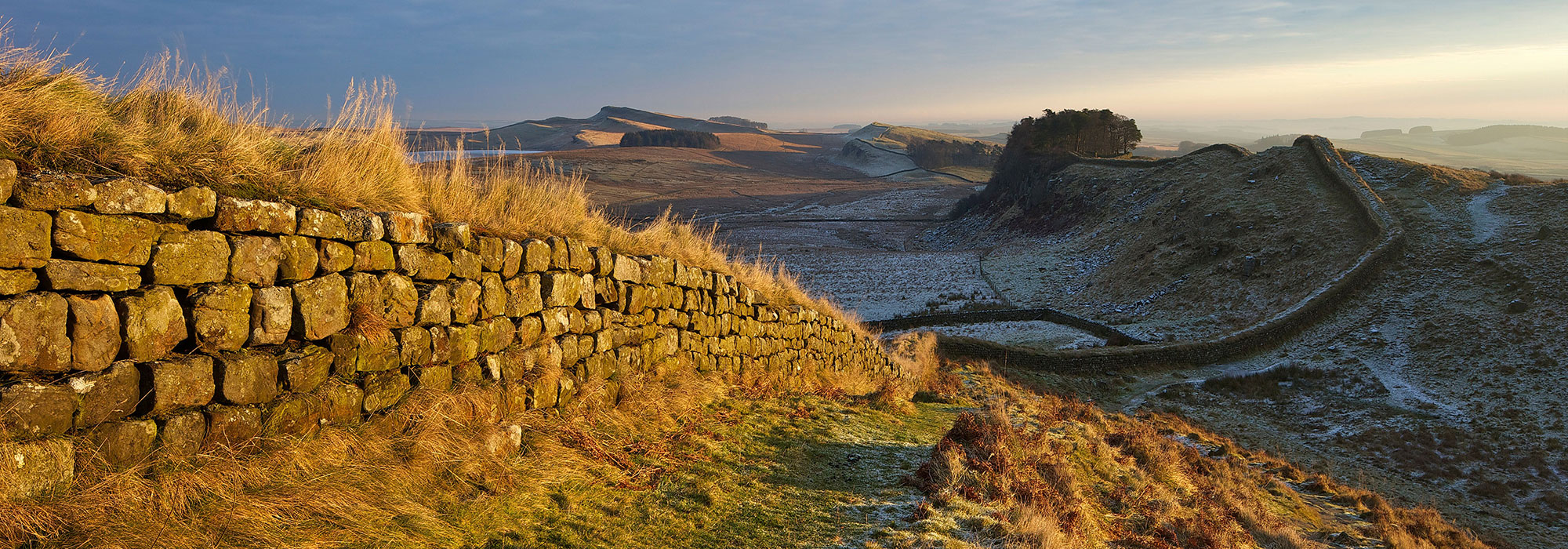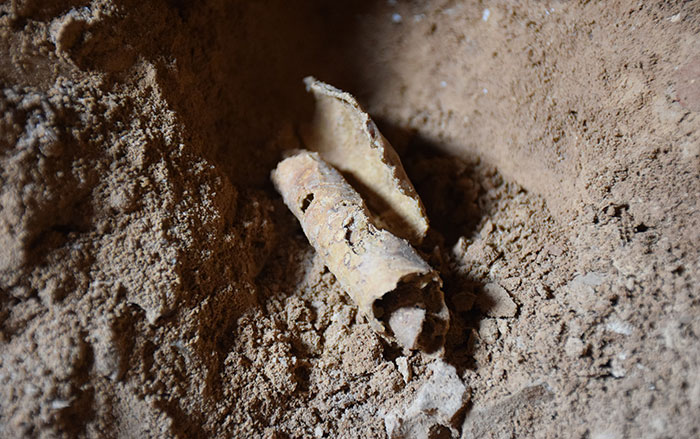By late August, most of the brash ice is gone from Greenland’s Nuuk Fjord, but occasionally the distant boom of an ice chunk calving off an iceberg echoes through the fog. A small boat owned by the Greenland National Museum, the Inua, cruises carefully toward the faint outline of an inlet. There are no trees on the shore, only bare rock, sea wrack, and patches of wild grass. The boat’s stern is angled toward a rocky point, and Henning Matthiesen, a soil chemist from the National Museum of Denmark, jumps over the bow and holds the nose of the Inua while colleagues scramble to pass boxes and backpacks over his head and onto shore. Matthiesen and five other scientists wait there while the boat returns to Nuuk, Greenland’s small capital city, to pick up their colleagues.
The researchers have arrived at a small, lifeless settlement called Kangeq. Several weather-worn houses can be seen through the dense fog, along with a boarded-up church, all connected by winding footpaths and dilapidated bridges. The ghost town was a lively community before it was abandoned in the 1970s. Giant whale ribs, broken glass, wood, and rusting metal poke out of a sludge pool near the water’s edge. Upon closer inspection, the earth around the pool is a thick layer of compressed turf containing thousands of disarticulated fish, bird, and sea mammal bones. It’s not a natural deposit, but one of the middens of Kangeq: a layered index of human occupation in western Greenland that covers at least two millennia.

“The atmosphere at Kangeq is unsettling,” says Jørgen Hollesen, leader of the project, known as REMAINS of Greenland (Research and Management of Archaeological Sites in a Changing Environment and Society). “People were living here for thousands of years, and then suddenly the whole town was deserted. There’s so much evidence of human activity—you can still see the playground where the kids used to play.”
Over the past several decades, archaeological surveys have identified hundreds of midden sites scattered throughout the interconnected fjords and archipelagos of western Greenland. The middens formed as generations of people threw their garbage out their front doors, and the unique combination of climatic and environmental conditions in this part of the Arctic preserved wood, bones, feathers, baleen, antler, leather, fur, animal dung, and even human hair. Under scrutiny, these materials can provide very specific information about how past peoples survived in the circumpolar north. But it’s clear that these deposits, like much of Greenland’s ice cover, are at risk from climate change. Fluctuating weather patterns are melting the permafrost and accelerating natural decomposition—turning the organic material into mush and what the Greenlandic archaeologists jokingly refer to as “butter bone.” The team at Kangeq is trying to track these changes and determine which sites are most at risk.
Greenland’s middens have already been a boon to the reconstruction of the country’s deep human past. For example, in 2010, researchers from the Natural History Museum of Denmark and the Beijing Genomics Institute sequenced the DNA from a tuft of human hair collected from a midden at Qeqertasussuk, a site north of the Nuuk Fjord. Results showed that Greenland’s earliest residents, the Saqqaq, known for their small-tool tradition, migrated from eastern Siberia, across the frozen ice shelves of Baffin Bay, about 5,000 years ago. Another distinct prehistoric people, called the Dorset, arrived around 900 B.C., but disappear from the archaeological record around A.D. 1300. Toward the end of their tenure in Greenland, the Dorset are believed to have shared the massive island with Norse colonists, though there is little evidence to suggest that there was much—if any—direct contact between the two peoples.
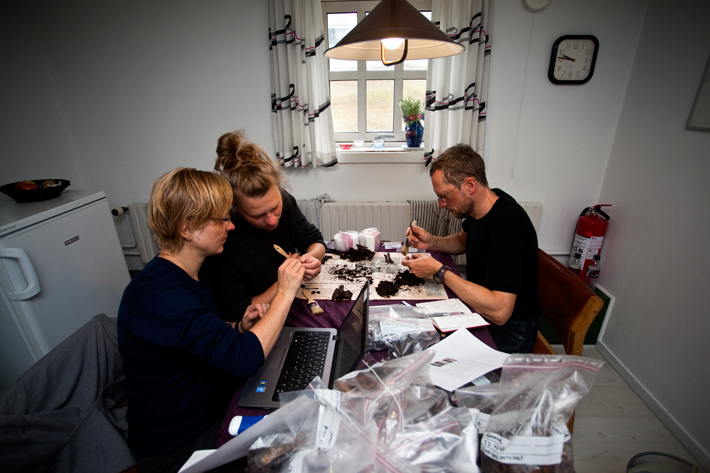
The Greenlandic Norse colonies lasted a few hundred years, and recently their disappearance has come to be seen as emblematic of a society that collapsed as a result of their failure to adapt to Greenland’s climate. However, newer archaeological evidence suggests that the Norse were actually very adept at making the most of the opportunities afforded by a highly unpredictable and intransigent environment. For example, the Norse were previously thought to have been shortsighted in the maintenance of their fields, resulting in soil erosion. New evidence suggests, on the contrary, that they were doing what they were supposed to do—reusing animal fodder to enrich their pastures and encouraging the growth of certain plant species to stabilize their fields. The disappearance of these early European settlers may have had more complicated and distant causes.
“Although environment and climate were certainly important factors, there was a combination of influences that led to the Norse withdrawal from Greenland,” says Christian Koch Madsen, archaeologist and curator at the Greenland National Museum. “This included demographic pressures, changing social relationships, a lessened demand in European markets for Greenlandic exports such as walrus ivory and skins, and microshifts in seasonal weather and the annual returns of harvests. The story is much more nuanced and needs to be contextualized by the growing body of archaeological evidence available.”
There is some anecdotal evidence that the Norse may have had some interaction with another group of indigenous peoples, the Thule, who arrived around A.D. 1200 and eventually gave rise to modern Inuit Greenlanders. Within a few centuries, the Thule settled almost all of Greenland’s fjord systems by adjusting their hunting and food gathering to the seasonal availability of resources both on land and in the sea. In the summer months, groups moved into the fjords to hunt large game such as caribou and musk ox, and in the winter they migrated to the coast to hunt seal and whale. Today, this ancient seasonal rhythm continues to shape the cultural land- and seascape. Its signs are visible at Kangeq, where the walls of Thule winter huts can still be seen along the shore near the more recent settlement. These huts would have provided ample shelter from harsh gales and sea storms, while providing access to the open waters of the Davis Strait.

Scandinavians returned to Greenland in the eighteenth century, and the island fell under the rule of the Danish Kingdom. In 1721, missionary Hans Egede established the first permanent European settlement in Greenland, slightly north of Kangeq. Egede’s decision to settle on this remote part of the west coast was motivated by the belief, held by many Scandinavians of the time, that a lost colony of Norsemen was still living in Greenland, waiting to be brought back into the Christian fold. Although Egede never found a lost colony, he did attract several converts among the Inuit peoples at Kangeq and the surrounding fjord. Within 10 years, Egede’s mission was relocated farther inland, to the shores of modern Nuuk (then called Godthaab, or “Good Hope”), where the weather was more favorable. During his time in Greenland, Egede traveled up and down the west coast and noted what he believed were remnants of Norse houses and farms.
Kangeq continued to be an important nexus of regional trade and an official trading station for agents of the Royal Greenland Trade Department for centuries. It was only in 1973 that the last families left the island for the mainland, a result of the Danish government’s efforts to coordinate social and health services. Kangeq was just one of a number of outposts that had dwindled in importance as the economy shifted toward large-scale commercial fishing.
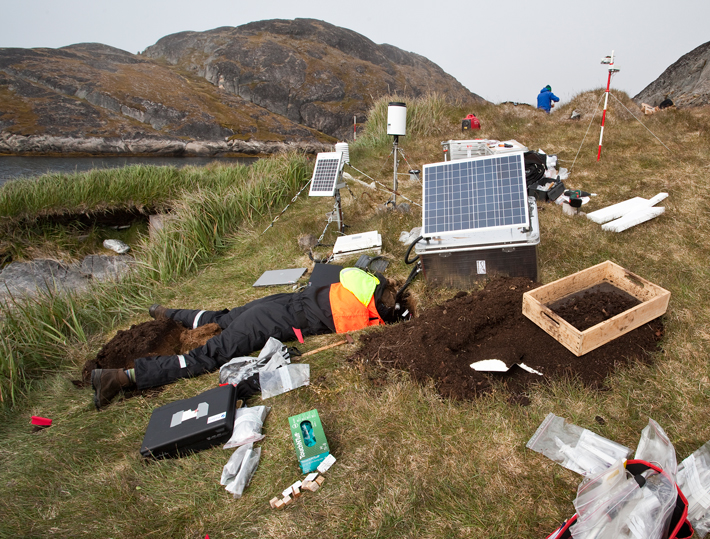
If there is a common story to the middens found throughout the Nuuk Fjord, it is how humans negotiated environmental uncertainty in the Arctic. However, many of these stories now appear to have an expiration date. In addition to increased rates of decomposition, coastal erosion is eating away at the archaeological record at some sites. For example, at the nearby Norse site of Itivi, the REMAINS team was unable to locate a large midden feature previously documented by Danish archaeologist Jørgen Melgaard in the 1950s. It appears that large portions of the site had been obliterated by the tide and a nearby channel current. Matthiesen, the soil chemist with the REMAINS project, is deeply concerned about the rate of change occurring at archaeological sites he has visited. “Evidence from the past has only been preserved due to the unique environmental conditions found in Greenland,” he says. “However, with the ongoing climatic and coastal changes we observe, some of the remains may start degrading or completely disappearing, and it is imperative for us to pinpoint which remains are most at risk.”

Currently, Greenland’s capacity for managing archaeological sites and monuments is limited. The enormous task is overseen by a small group of individuals from the Greenland National Museum. Bo Albrechtsen, deputy director of the museum, is encouraged by the possibilities offered by the REMAINS project, but shares the concern about the future of Greenland’s cultural resources. “We have a very difficult situation here in Greenland. We only have a handful of qualified individuals responsible for monitoring, documenting, and protecting a huge area,” he says. “Greenland’s coastline alone stretches over 44,000 kilometers [27,000 miles], longer than the entire coastline of Australia.” One of the eventual outcomes of the REMAINS project will be a map that identifies the most vulnerable sites, created by feeding the data collected in the coming years into the museum’s online database.
Back at Kangeq, the team’s time is limited. The weather can turn bad with little warning, so the researchers work quickly and methodically. Hollesen, with the assistance of archaeologists from the Greenland National Museum, checks some monitoring equipment installed at the site in 2012. Andreas Westergaard-Nielsen, from the Department of Geosciences and Natural Resource Management at the University of Copenhagen, works with PhD student Rasmus Fenger-Nielsen to set up a quadcopter drone and perform a high-resolution aerial survey of the site. Pinpointing the current configuration of the high tide line from above will help determine a baseline for measuring further coastal erosion at Kangeq. If time and weather permit, the team will also install time-lapse cameras to observe the snowpack accumulation over the coming winter.
Later in the day, PhD student Anne Marie Eriksen, from the Centre for GeoGenetics at the University of Copenhagen, sits next to an open pit, attaching labels to small pieces of pig bone with pink string. In addition to monitoring subsurface phenomena such as soil temperature and moisture, the team is also collecting data on the speed and intensity of natural decomposition of organic materials in the middens. Eriksen embeds chunks of bone, one by one, at different depths in the wall of the pit before it is backfilled with soil. She is optimistic that when the team returns to the site in a few years they will have a baseline for measuring the rate of decomposition in the midden. “The conditions we observe below the surface at different sites in the study area are profound,” she says. “Understanding the duration of freezes and thaws and the rate at which these organic materials decompose at different sites will give us a better idea of where we should direct future efforts in order to save the archaeological remains.”
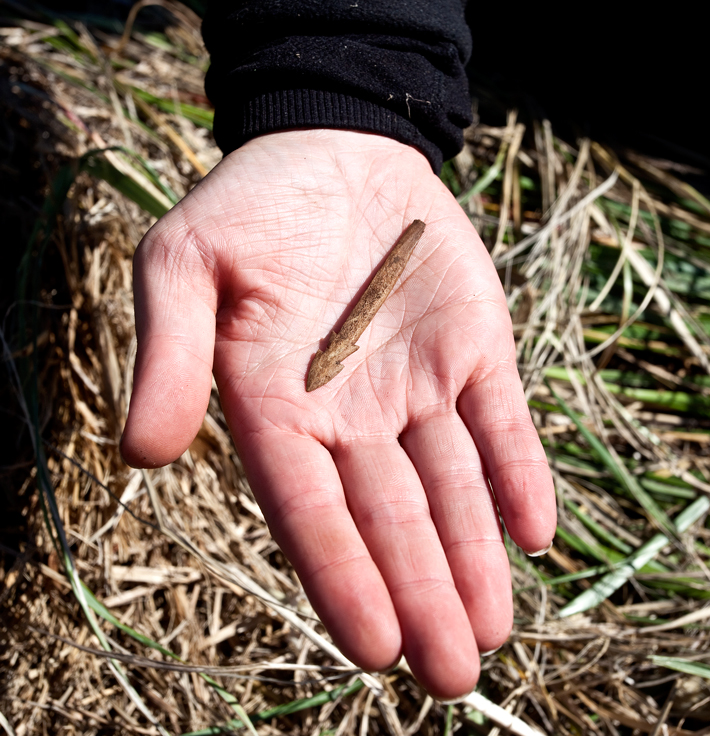
Besides annual fluctuations in the rates of freezing and thawing belowground, other climate-driven phenomena are significantly affecting the archaeological record. Greenland is actually becoming greener. Nanna Bjerregaard Pedersen, a researcher from the National Museum of Denmark, walks along the rocky shoreline, scanning the landscape for patches of Salix glauca, a flowering dwarf willow species native to North America that has proliferated in Greenland over the last century. Robust species such as S. glauca are taking advantage of the nutrient-rich soil found in middens, and their deep root systems appear to be hastening the breakdown of organic material. Samples collected during this field season will be shipped to Denmark for dendroanalysis and hopefully provide some insight into the northward migration of the species.
Albrechtsen believes that new strategies must be developed to take advantage of local knowledge to manage the future of Greenland’s heritage. “Modern Greenlanders are frequently very familiar with changes to their hunting and fishing grounds from year to year, and we want to figure out a way to capitalize on this local knowledge,” he says. One possibility he suggests is the development of a simple mobile app to document and record important information on threats to coastal archaeological sites. He is encouraged by the success of crowdsourcing the collection of coastal heritage data in other North Atlantic countries. Combined with the information collected by the REMAINS team, these data can offer a real-time picture of perennial changes in the coming years and decades.
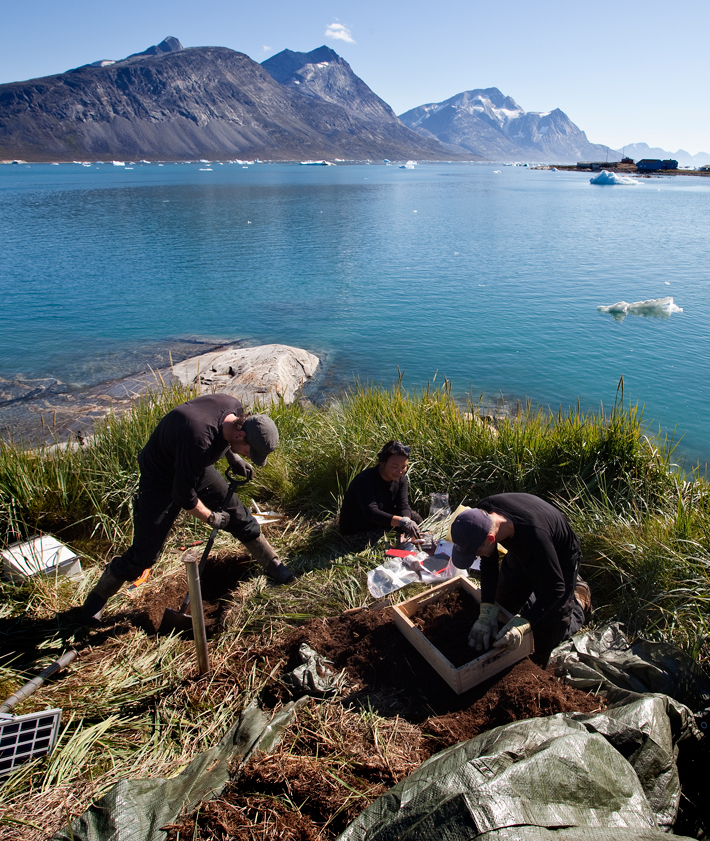
Greenlanders have always had an intimate relationship with the land and sea, and have always had to come to terms with the reality that these places are defined by uncertainty. The success and failure of past peoples—from the Saqqaq and the Dorset to the Norse and the Thule—have always been shaped by the information they had available at the time, and knowledge passed down over generations. At the moment, Greenland, like other Arctic communities, is experiencing milder weather and less severe winters. Not everyone perceives these changes as negative. Johan Jeremiassen, a 29-year-old local fisherman and hunter, comments on the changes in the fjord in recent years with the help of a translator from the museum. He smiles and says that the fishing is better lately and more cod seem to have returned to this part of the country, which always means more steady work. But farther inland, the fjord was unusually dry during the summer, there were hardly any mosquitoes, and the caribou moved farther in because the vegetation was not getting enough rain. For Jeremiassen it is hard to say whether these types of little changes are precursors to a bigger change, or just the normal fluctuations between good and bad years that have always defined life in Greenland.
But the little changes are being felt in Kangeq in other ways. The children and grandchildren of the people who once lived there are beginning to return, and are slowly rebuilding and repairing some of the older structures for recreational use during the summer. As the population of Nuuk grows, places such as Kangeq will likely become popular for tourists and daytrippers looking to explore Greenland’s historic and archaeological legacy. “The Arctic is a bellwether for the massive climate change impacts already being felt and predicted to increase around the world. What we see in Greenland may just be the beginning,” says Hollesen. “It is time to realize that these fantastic records of our past should not be taken for granted. This generation and the next live in a crucial juncture with a once-ever opportunity to recover, save, and analyze them.”



